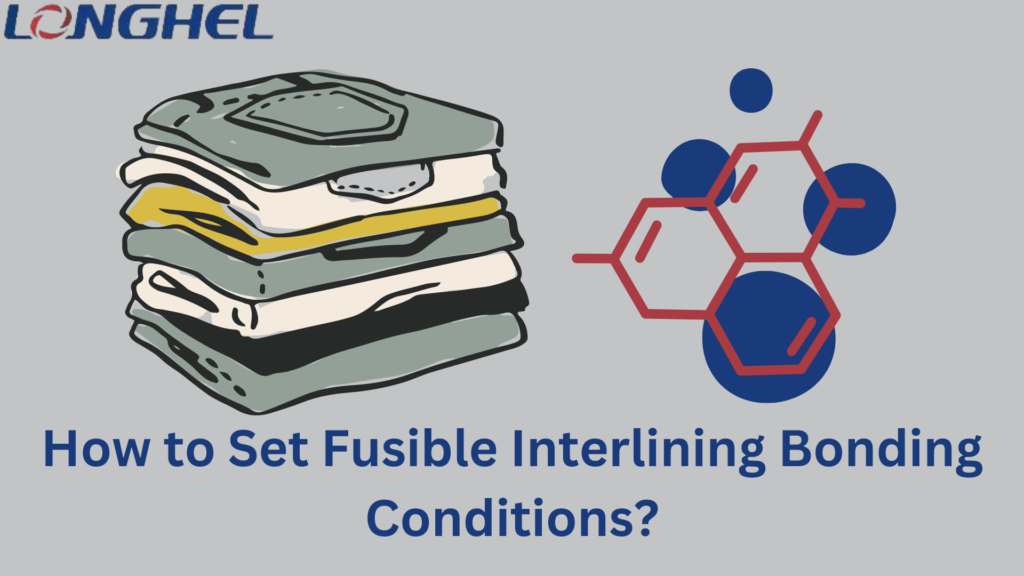Introduction
Mastering fusible interlining bonding conditions is crucial for clothing makers who want to create top-notch products. This means ensuring that the extra material sticks firmly to the Fabric, making the clothes look and feel better. Makers can get the best results by controlling things like heat, pressure, and timing.
Understanding fusible interlining is key. It’s an extra material added to fabrics to make them stiffer or more structured. There are different types of clothes. To get things right, it’s important to pick the right one for the Fabric and how the clothes will be used.
This guide will explain in simple terms how to set the right conditions for bonding. By following these steps, makers can ensure their clothes look great and hold up well. It’s all about giving customers the quality they expect.
What Is Fusible Interlining?
Fusible interlining is like a secret ingredient for making clothes. It’s an extra layer of Fabric you add to your main Fabric to strengthen your clothes and hold their shape better.
What It’s Made Of
- Material: Fusible interlining is usually made from polyester or a mix of polyester and cotton.
- Coating: One side of the interlining has a special coating that melts when heated, helping it stick to the Fabric.
- Types: You can find fusible interlining in different thicknesses and even stretchy versions to suit different needs.
How to Use It
- Get Ready: Cut the fusible interlining to match your fabric pieces.
- Put It in Place: Place the interlining between the layers of Fabric where you want extra support.
- Make It Stick: Heat the interlining with an iron. This melts the coating and makes it stick to the Fabric, creating a strong bond.
Why It’s Better Than Sewing
Using fusible interlining has some advantages over sewing in an extra layer:
- Faster: It’s quicker and easier to apply fusible interlining than sew in another Fabric layer.
- Smoother: Fusible interlining gives a smoother finish than sewn-in layers, making your clothes look better.
- Saves Time: Using fusible interlining saves time and effort, making the whole process of making clothes more efficient.
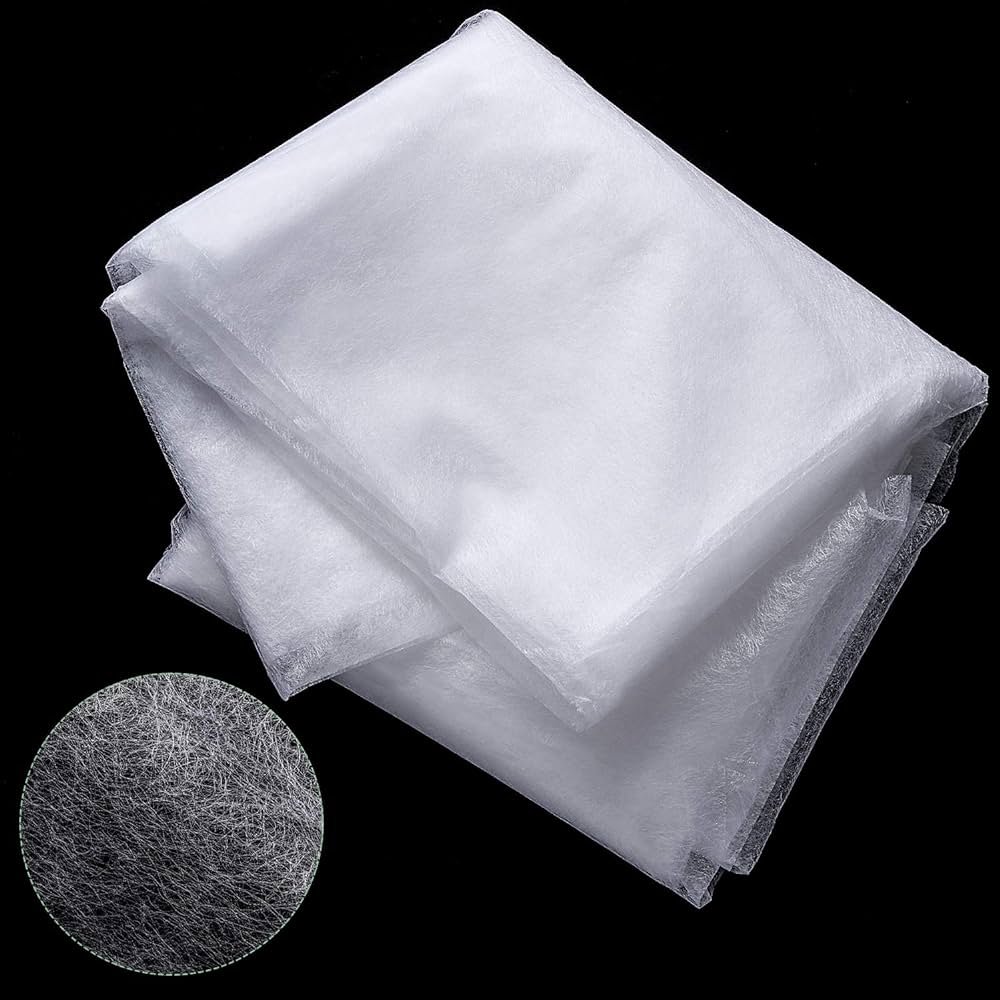
What Factors Influence Bonding Conditions?
Several factors affect how well fusible interlining sticks to Fabric. Knowing these factors is important for making clothes that hold up well.
Temperature
The heat used in bonding activates the sticky part of the interlining. Too little heat won’t make it sticky enough, but too much can damage the Fabric.
Pressure
The key is to apply the right amount of pressure. This helps spread the sticky stuff evenly for a strong bond. Too little pressure means it won’t stick well, but too much can mess up the Fabric.
Time
The time the heat and pressure are applied matters. It needs enough time for the sticky stuff to melt and stick. Too little time means it won’t stick properly, but too much can burn the Fabric.
Fabric and Interlining Compatibility
It’s important to make sure the Fabric and interlining get along. Different fabrics and interlinings need different bonding conditions. Testing them together beforehand can prevent problems like the interlining coming off or the sticky stuff bleeding through.
How to Determine the Ideal Temperature Range?
Finding the right temperature is crucial when bonding fusible interlining to Fabric. Here’s how to figure out what works best.
Testing Temperature Sensitivity
Start by testing how sensitive your Fabric is to heat. Use a scrap piece of Fabric and interlining to try different temperatures. Look for the one that melts the adhesive without damaging the Fabric.
Adjusting for Different Fabric Types
Different fabrics need different temperatures. Delicate fabrics like silk may need lower heat to avoid damage, while tougher fabrics like denim can handle higher temperatures.
Avoiding Overheating
Be careful not to overheat the Fabric. You’ve gone too far if it starts to change colour or smell funny. Lower the temperature and try again.
Achieving Optimal Bonding
Once you find the right temperature, use it consistently across your project. Ensure your iron is in the correct setting, and evenly apply heat to all areas for the best bond.
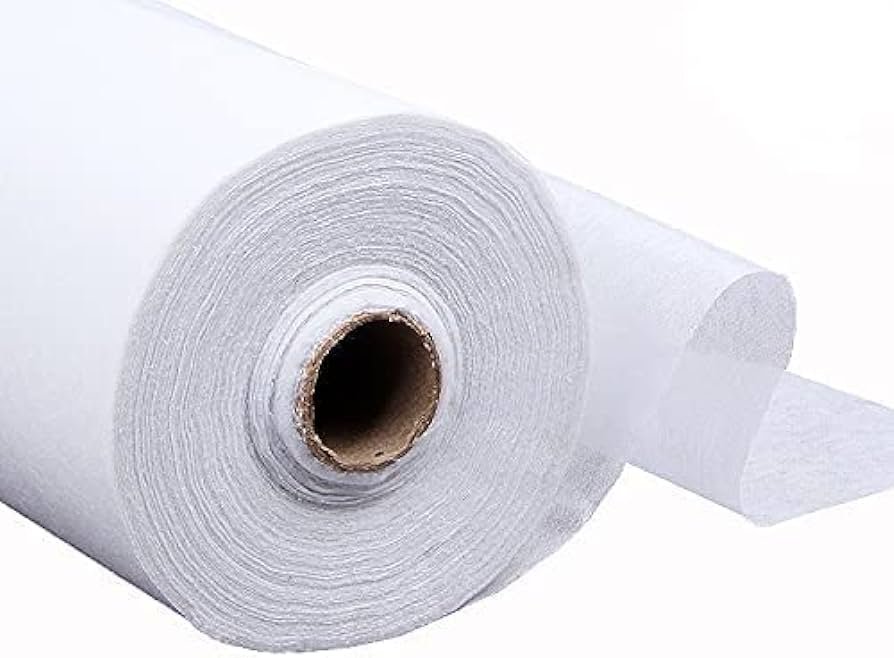
What’s the Right Pressure Setting?
Getting the pressure right ensures the fusible interlining sticks well to the Fabric. Let’s figure out how to do it just right.
Why Pressure Matters
The right amount of pressure helps spread the sticky stuff evenly, ensuring everything sticks together nicely. Too little pressure means the bond might not hold, but too much could mess up the Fabric.
How to Pick the Perfect Pressure
Start with medium pressure and test it on a small piece of Fabric and interlining. Look for a strong bond without any wrinkles or damage to the Fabric. Keep adjusting the pressure until you get it just right.
Watch Out for Problems
Be careful not to press too hard, or you might have wrinkles or squished Fabric. It’s better to start with less pressure and gradually increase it until you find the sweet spot.
Keep It Consistent
Once you find the perfect pressure, stick with it for the whole project. Ensure your iron or bonding machine applies the pressure evenly over the Fabric to get a nice, even bond.
How to Time the Bonding Process?
Getting the timing right is super important when sticking fusible interlining to the Fabric. Let’s figure out how to do it right for a strong bond.
Understanding Bonding Time
How long you apply heat and pressure decides how well the interlining sticks. Too short a time won’t make it stick well, but too long can ruin the Fabric.
Estimating Bonding Time
Start with a medium amount of time and test it on a small piece of Fabric and interlining. Look for a strong bond without any damage to the Fabric. Adjust the time until it’s just right.
Factors Affecting Bonding Time
The type of Fabric and interlining can change how long you need to bond them. Thicker fabrics might need more time, while delicate ones might need less.
Doing Test Runs
Before you bond your main project, always do a test run to find the right timing. This helps you avoid mistakes and makes sure the bond works well.
Keeping It Consistent
Once you find the perfect timing, stick with it for the whole project. Ensure the heat and pressure are even across the Fabric for a good bond.
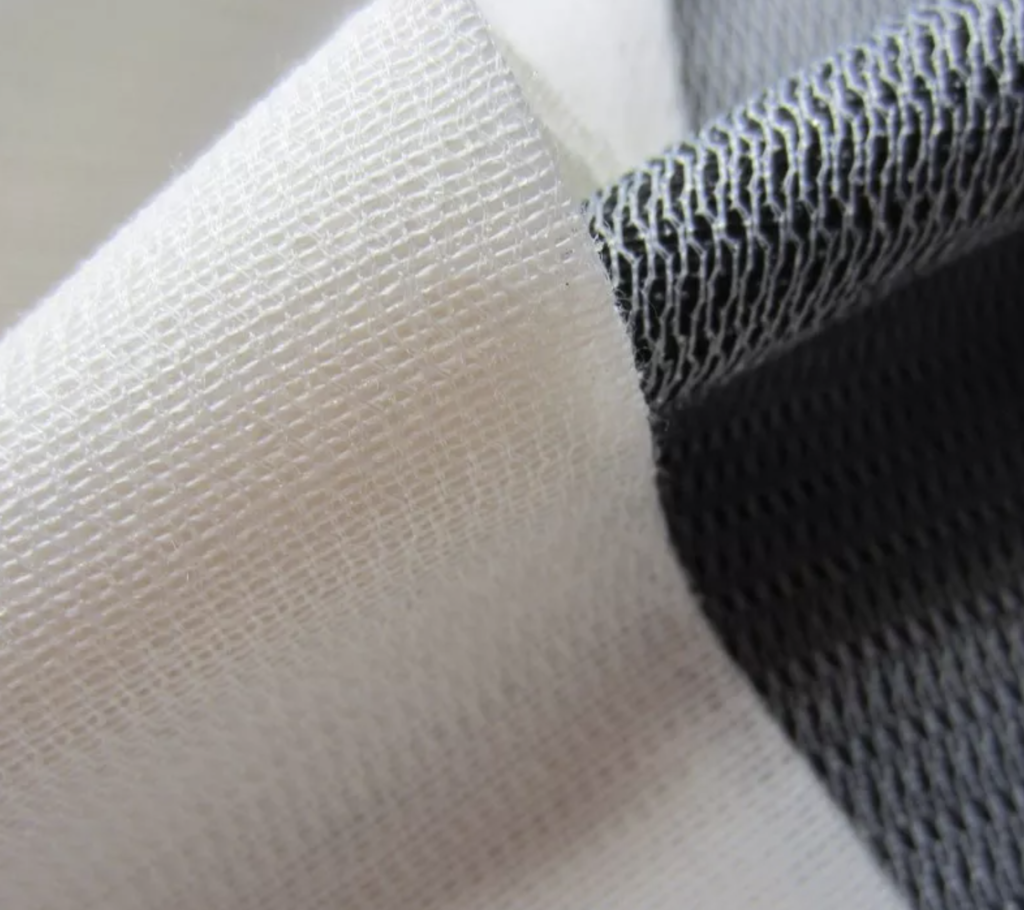
How to Test Fabric and Interlining Compatibility?
It’s important to ensure that your fabric and interlining match. Let’s examine how to check this.
Starting Out
Cut small pieces of your Fabric and interlining to test them together.
Applying Heat and Pressure
Use your iron or bonding machine to press the samples, like you would with your main project.
Checking the Results
Check to see how well the interlining sticks to the Fabric. Look for signs of problems, such as peeling or bleeding.
Making Adjustments
If there are issues, try changing the heat, pressure, or time to see if it helps.
Keep Testing
Keep trying until you get a strong bond between the Fabric and interlining.
What Are the Solutions to Common Bonding Issues?
Sometimes, sticking fusible interlining to Fabric doesn’t go smoothly. Let’s look at easy fixes for common problems.
Troubleshooting Delamination
If the interlining starts off the Fabric, use more heat and pressure when bonding. Make sure to press evenly all over for a stronghold.
Preventing Adhesive Bleeding
Lower the heat and bond for a shorter time to stop the sticky stuff from seeping through the Fabric. Testing the Fabric and interlining together beforehand can also help avoid this problem.
Dealing with Inadequate Bonding
If the interlining doesn’t stick well, crank up the heat and pressure. Also, give it a little more time to bond properly.
Addressing Fabric Shrinkage
To avoid fabric shrinkage, use less heat and pressure. It’s also a good idea to shrink the Fabric before bonding.
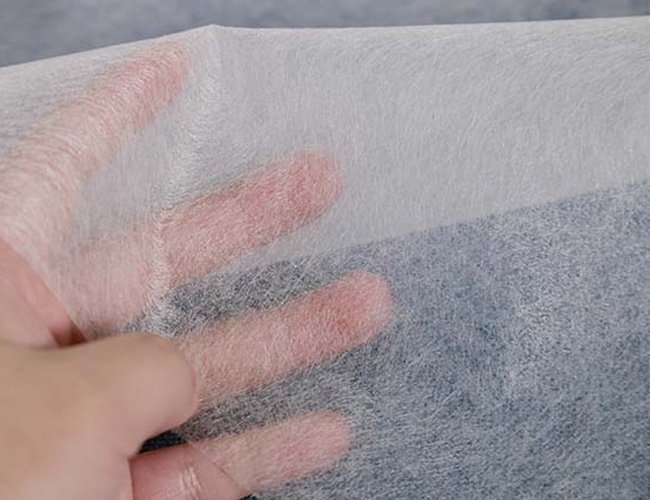
What Advanced Techniques Enhance Bonding?
Sometimes, sticking fusible interlining to Fabric doesn’t go smoothly. Let’s look at easy fixes for common problems.
Troubleshooting Delamination
If the interlining starts off the Fabric, use more heat and pressure when bonding. Make sure to press evenly all over for a stronghold.
Preventing Adhesive Bleeding
Lower the heat and bond for a shorter time to stop the sticky stuff from seeping through the Fabric. Testing the Fabric and interlining together beforehand can also help avoid this problem.
Dealing with Inadequate Bonding
If the interlining doesn’t stick well, crank up the heat and pressure. Also, give it a little more time to bond properly.
Addressing Fabric Shrinkage
To avoid fabric shrinkage, use less heat and pressure. It’s also a good idea to shrink the Fabric before bonding.
Why Are Fine-Tuning Bonding Conditions Important?
Getting the way you stick fabric layers together just right is super important. Here’s why:
- Makes Clothes Stronger: When you heat, press, and time it, the layers stick well. This means your clothes are tougher and less likely to rip.
- Keeps Fabric Nice: Getting it right helps avoid problems like wrinkled or burned Fabric, making your clothes look smooth and neat.
- Keeps Clothes in Shape: Getting the sticking right helps clothes keep their shape better. This is important for parts like collars and cuffs that must stay nice and crisp.
- Every Piece is Good: It’s key to ensure that all your clothes are top-notch. Fine-tuning the sticking helps, so every piece you make is great.
- Fewer Mistakes: When you get the sticking just right, there are fewer mess-ups. This saves time and materials, making everything run more smoothly.
- Happy Customers: Happy customers come back for more. When your clothes are strong, well-made, and look good, customers are happy and return.
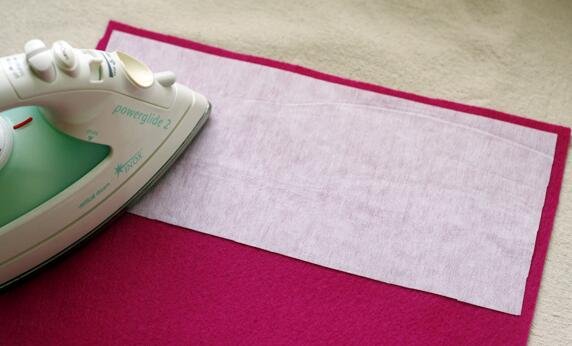
Conclusion
Getting the stick right is crucial for making clothes that last and look great. Adjusting heat, pressure, and timing helps Fabric and interlining stick well. This means clothes stay strong and keep their shape, making customers happy. Fixing sticking conditions also reduces mistakes, saving time and materials. The goal is happy customers who love their clothes. Mastering sticking makes awesome clothes people love to wear.
FAQs
What Are the Requirements of Fusing for Fusible Interlining?
Fusing fusible interlining requires the right heat, pressure, and timing. Compatible Fabric and interlining should also be used on a clean surface.
What Are the Parameters of Interlining?
Interlining’s weight, thickness, and material matter. Also, consider the glue type, spread, and the interlining’s size.
What Is the Bond Strength of Interlining?
How well the interlining sticks work depends on fusing and interlining quality, and they must be strong enough for clothes.
Recommended bonding conditions
Hot melt adhesive HDPE: temperature 165-175℃, time 15-18 seconds, pressure 3-3.5kg/cm². Hot melt adhesive PA/PES: temperature 130-135℃, time 15-18 seconds, pressure 1.5-2kg/cm2。
Contact us today to purchase high-quality lining cloth for your garment manufacturing business.
